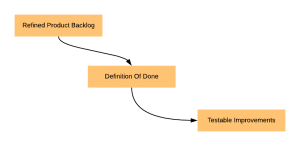— August 20, 2018

Free-Photos / Pixabay
Leadership plays a crucial role in the success of any organization. Research has shown that companies with top-tier leadership outperform competitors by 19%, are more innovative and adaptive, and have more engaged workforces. Unfortunately, many organizations struggle to identify and promote effective leaders, which may contribute to enormous amounts of wasted time, money, and effort.
A recent Forbes article compiled a number of alarming workplace statistics on leadership:
- A CareerBuilder.com study found that a shocking 58% of managers said they never received any management training.
- Although 89% of bosses believe that employees quit over money, author Leigh Branham found that only about 12% actually do so. Similar studies found that 79% of people left due to a “lack of appreciation.”
- A Harvard Business Review survey indicated that 58% of people actually trusted a complete stranger more than their own boss.
Selection Problems
The trends in these responses are easy to spot. People are being promoted into leadership positions without receiving the training needed to succeed in those roles. In turn, employees become disengaged or end up leaving the company because they don’t trust or feel valued by their leaders. These findings echo Gallup research that shows companies generally do a poor job of selecting leaders, choosing candidates who are not a good fit for the role about 82% of the time.
Part of the problem is that organizations often fail to consider what motivates someone to want to be a leader in the first place. It’s often easier to focus on unreliable factors like identifying people who are the first to arrive and last to leave, are strong producers on an individual basis, or even less measurable “gut feeling” qualities. Many employees are elevated to leadership positions simply on the basis of tenure and experience, even though their previous responsibilities did little to prepare them to lead. In some cases, taking on a leadership role is the only way for someone to earn a promotion or raise even if they have little, if any, interest in the responsibilities of the job.
Qualities of a High-Potential Employee
The truth of the matter is that only about one-in-seven high performing employees are actually high-potential leaders. Generally speaking, there are three qualities that consistently stand out in the profiles of these candidates: ability, aspiration, and engagement.
- Ability: Although often used interchangeably with productivity, ability in this context refers more to whether or not the candidate possesses the right competencies to succeed in a leadership role. Work efficiency is important here, as being able to get more done with fewer resources or in less time than others is a good indicator of how well a candidate will be able to manage the organizational pressures of leading a team. Employees who have the ability to take ownership of their work and consistently put in whatever effort is needed to bring it to completion are more likely to hold themselves accountable as leaders.
- Aspiration: High-potential employees usually set themselves apart from their peers by aspiring to grow and improve. They may not necessarily be focused on climbing a managerial hierarchy, but they do want to better themselves in some way. In addition to seeking out new learning opportunities and taking on new tasks, high-potential candidates are eager to receive feedback about their performance so they can identify what skills they need to improve. By learning about different roles within the company, they improve their systems-based thinking, which helps them to understand how changes to one process within a department may have an impact on others.
- Engagement: Motivation is seldom a problem for high-potential employees. They tend to be highly engaged in their work, with strong enthusiasm for the company and its industry as a whole. Volunteer opportunities are very attractive to them and they work hard to position themselves as ambassadors for the organization. Their commitment is infectious, and in many cases they help to inspire other employees to be more productive and engaged. These qualities are difficult to teach through development programs. A candidate with a strong passion for their work is usually willing to put in the effort to develop additional skills that will help them succeed in leadership roles.
A Desire to Lead
Another key behavior that sets high-potential employees apart is their desire to lead. Leadership carries a degree of risk with it that many people find intimidating or undesirable, but for others, it is an opportunity to take on greater responsibility and serve as a critical change agent in an organization. These are the candidates who are more likely to be able to handle the responsibility and stress of the role and become leaders capable of inspiring their teams and creating enthusiasm around projects.
While these aspiring leaders don’t necessarily have to possess superior charisma, they usually have strong communication skills to make them effective influencers with a bit of focused development. Qualities like personal integrity and high levels of self-awareness make it possible for them to build the trust necessary to lead effective teams.
Motivated for the “Right” Reasons
Many high-potential employees are certainly considered ambitious, but the most successful candidates are driven by a desire to help the organization and their teams meet their goals. They want others to succeed and are not afraid to give credit where it’s due. These leaders build trust and create a safe environment in which employees know their hard work will be recognized and appreciated.
Ego-driven candidates who are motivated solely by personal accomplishments very often end up creating hostile, low-trust work environments. They are quick to blame others, and may guard information as a means of control. In many cases, they use their positional power to take credit for work others have done and portray themselves in the best light possible. Over time, these leaders create work environments driven by low morale, high turnover, and poor collaboration.
Investing in effective training and development programs goes a long way toward ensuring that ego-driven candidates are identified and managed early before their behaviors negatively impact the rest of the team.
By identifying people who have the qualities to potentially become a leader and are motivated to assume leadership roles for the “right” reasons, companies can ensure a healthy future. Aspiring leaders who are committed to developing their skills and helping teams achieve their goals represent one of the most valuable assets an organization can possess. Only by identifying them early and devoting resources to their continued development can they take steps toward establishing a lasting and successful talent pipeline.
Business & Finance Articles on Business 2 Community
(66)






